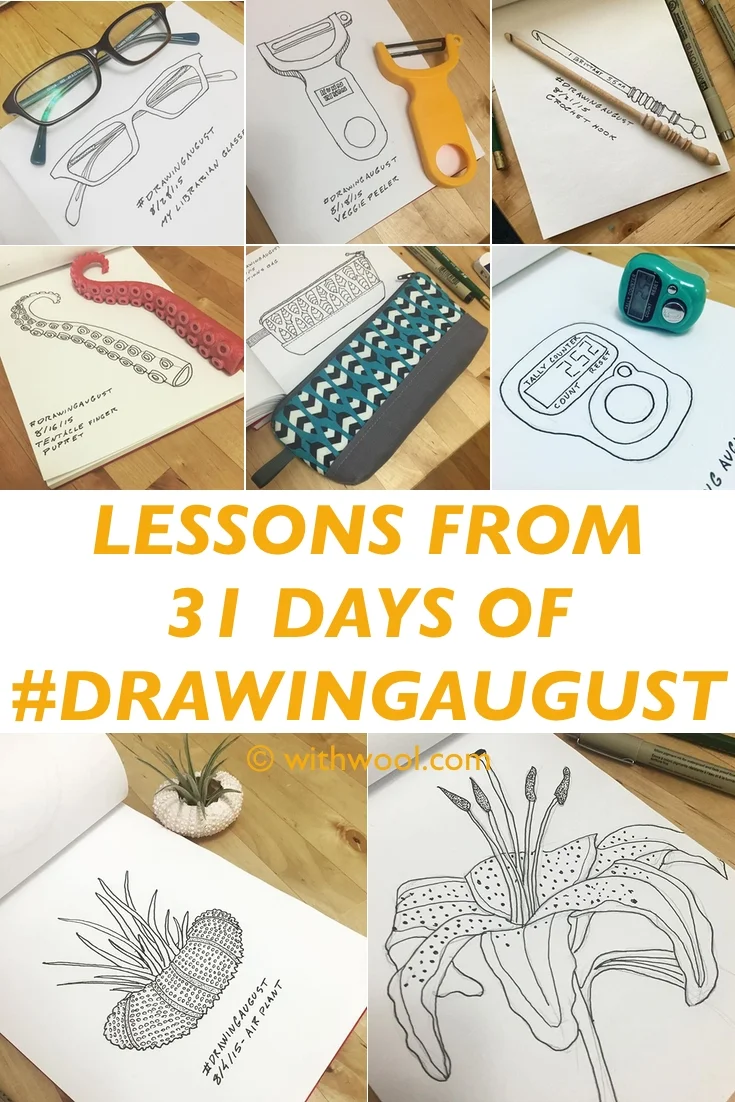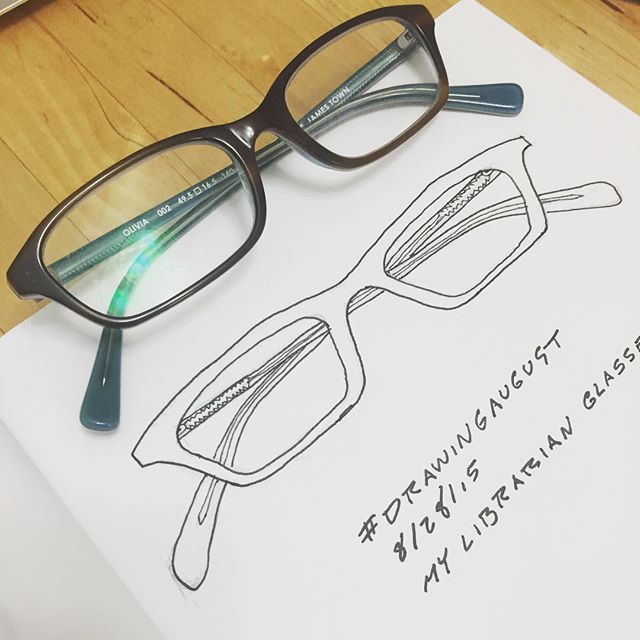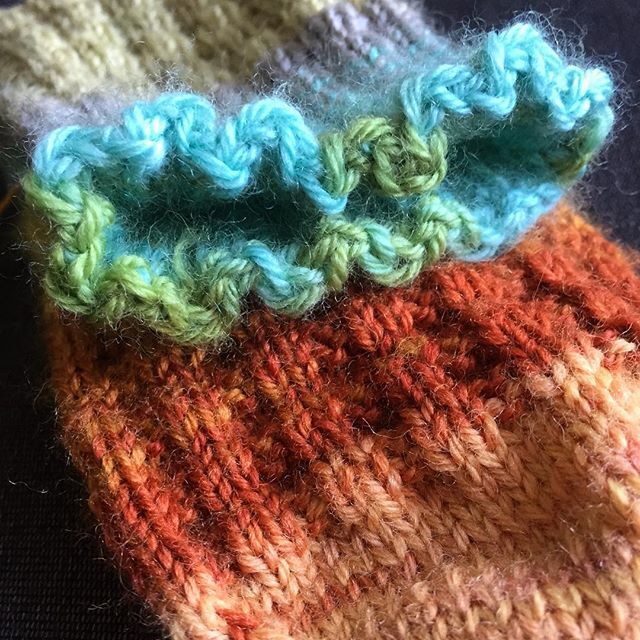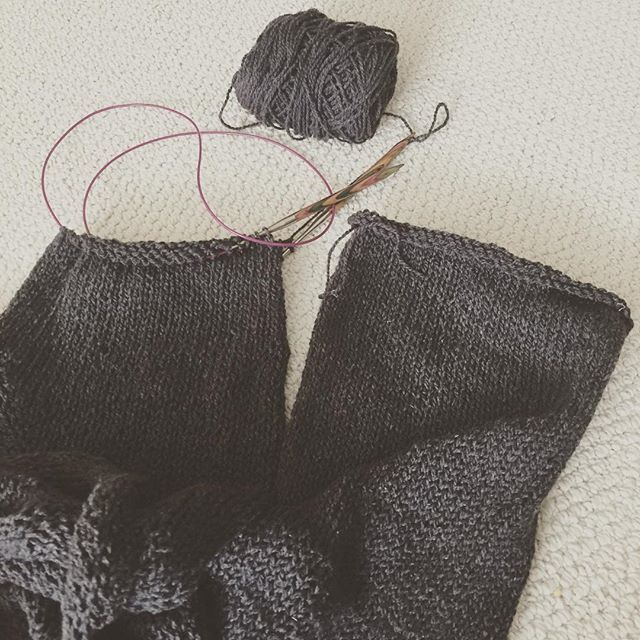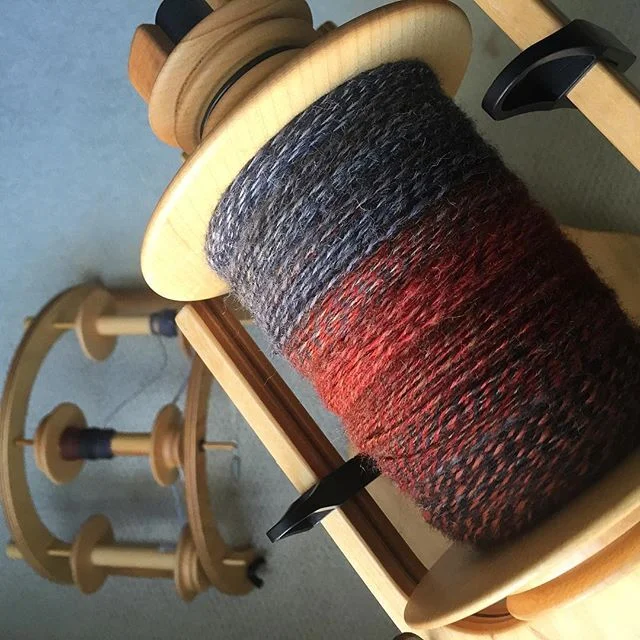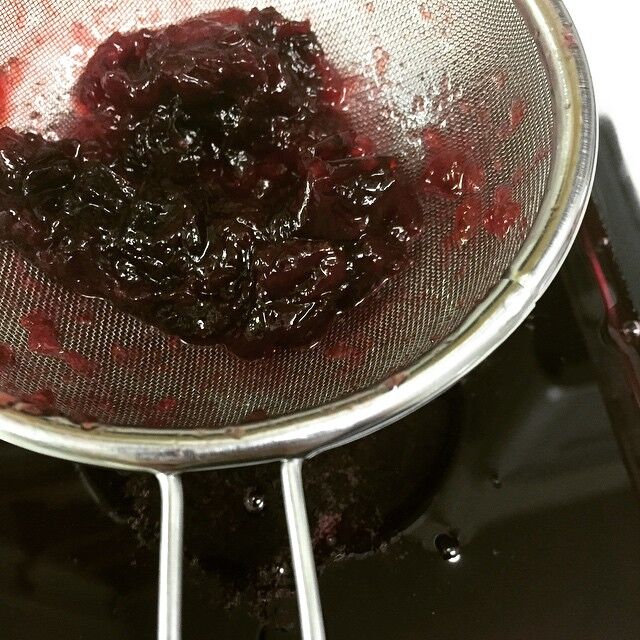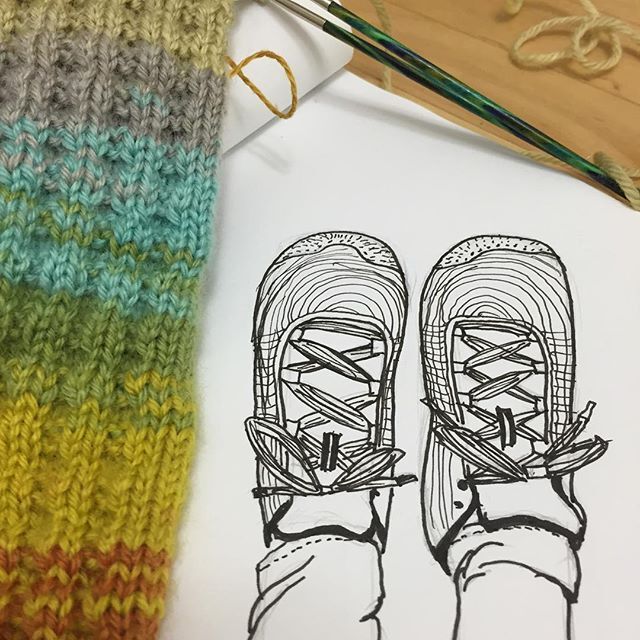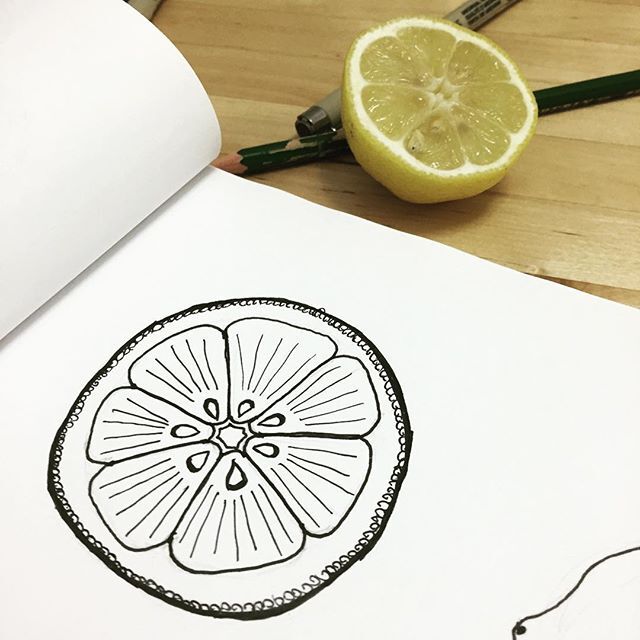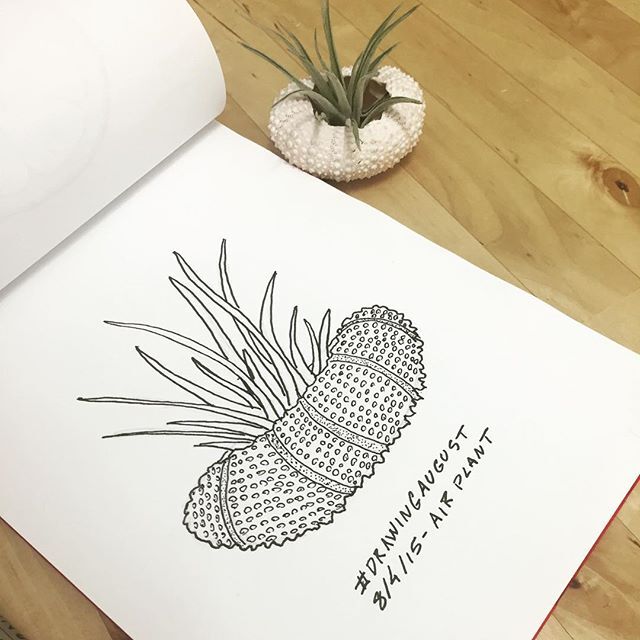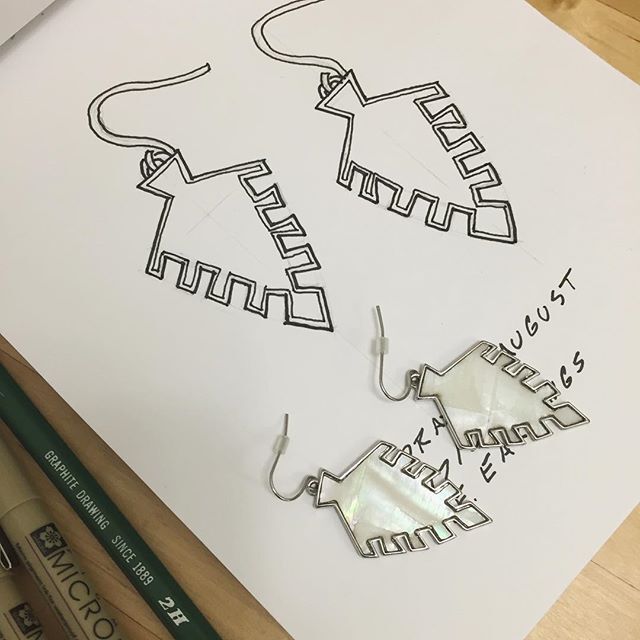How To Do The Math For Toe Up Sock Gussets
/I am a toe-up sock knitter. There are lots of reasons why I made the switch to toe up socks after knitting a few pairs of cuff down socks but the main reason is pretty straightforward. I, and most of the people I knit socks for, have big feet. Working from the toe-up means I can increase until I reach a stitch count that fits at a gauge that will make a comfortable, durable sock.
There are plenty of options for heels to work on toe up socks: heel flaps, short rows, afterthought heels, and all manner or hybrids. I usually go for a heel flap with a gusset because that style fits me the best. Luckily, the math to figure out where to start a gusset is easy-peasy. I do this math for every pair of socks I knit, whether I working from a pattern or making it up on the fly, and it takes less than 5 minutes. Those 5 minutes are worth it to get a great fitting pair of socks.
To get started you need your stitch count, row gauge, and the finished foot length. When you do the math on the back of an envelope, this is what it looks like. Seriously, the hardest thing about the whole process is measuring the row count.
Stitch Count x .5 = gusset rows
Gusset Rows / Row Gauge = Gusset Length
Foot Length - Heel Turn Length - Length of Gusset = Where to start gusset
I’m working on pair of 2x2 ribbed socks that I’m going to use as an example. Here are the numbers and the math.
64 x .5 = 32 sts
32 sts / 13 rows = 2.46”
10.25” - .75” - 2.46” = 7.04”
Stitch Count: 64 sts
Row Gauge: 13 rows/inch
Sock Length: 10.25”
Step 1: The usual number to increase for a sock gusset is 50% of the stitch count. For this pair, that means increasing 32 stitches before beginning the heel turn.
The typical gusset construction of increasing 2 stitches on one row and working a plain row the next makes figuring out the gusset’s row count really easy. The answer is 32 because I’m increasing 32 stitches. Here’s why:
32 stitches / 2 (because increases happen twice on increase rounds) = 16 increase rounds
Add an equal number of plain rows and:
16 increase rounds + 16 plain rounds = 32 gusset rows
If you’re knitting a sock to fit a high instep, you’ll probably need a taller heel flap. Increase 60% of the stitches instead of 50%. The rest of the math is exactly the same.
Step 2: Now to find out how long the gusset will be.
Gusset Rounds / Row Gauge = Gusset Length
32 gusset rows / 13 rows an inch = 2.46”
Step 3: Now that we have the length of the gusset, we can figure out where to start it. I estimate needing .75” for the heel turn. If you’re making socks for smaller feet, .5” is a good estimate. For a more exact number, measure the length of heel turn on a sock you’ve already knit.
Foot Length - Heel Turn Length - Gusset Length = Where to start the gusset
10.25” - .75” - 2.46” = 7.04”
After rounding down the final number to get something easier to work with, the gusset needs to start 7” from the tip of the toe. That's all it takes to figure out the increases and where to start a sock gusset. Happy sock knitting!




































































